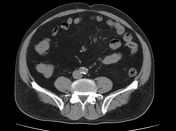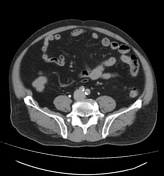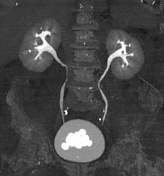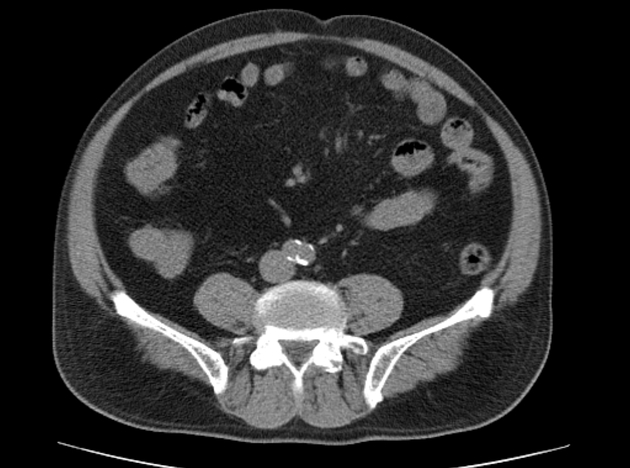Presentation
Hematuria.
Patient Data
Age: 75 years
Gender: Male
From the case:
Bladder calculi








Download
Info

Numerous calculi of various size (from 8 to 23 mm) are noted within the urinary bladder with a mean density at 560 HU.
Normal appearance of both kidneys with no renal or ureteric stone seen.
Enlarged prostate (weight = 55 g).
Case Discussion
CT features of bladder calculi.
Bladder calculi occur either from migrated renal calculi or urinary stasis. Bladder calculi can be divided into primary and secondary stones:
- Primary: stones formed in sterile urine, usually renal calculi which have migrated down into the bladder
- Secondary: stones form de novo in the bladder or from concretions on foreign material (e.g. urinary catheters)




 Unable to process the form. Check for errors and try again.
Unable to process the form. Check for errors and try again.